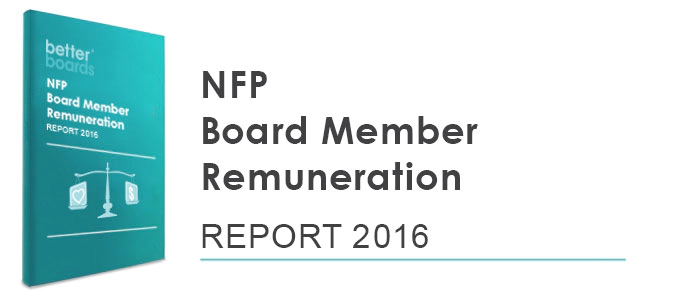governance
Tech in the Boardroom: Beyond the Board Portal
Published: May 9, 2016
Read Time: 12 minutes

Discussion of boardroom technology has almost exclusively been focused on board portals. This makes sense as board portals have probably had one of the most significant impacts on boards of any widely available technology to date. However, we are now beginning to see the consumerisation of a wide range of far more complex and advanced technologies that have the potential to make a significant impact on the boardroom and the way boards operate. These technologies will also impact the decisions boards must make about their organisations in other ways, however, for the purposes of this article we’ll stick to any foreseeable impact on the operation of the board itself.
While it will be some years before we see a full proliferation of these advanced technologies in every boardroom, directors should be aware of them, as some have the potential to be highly disruptive not only to their organisations but even to the point of bringing into question whether we might see the end of the need for boards, particularly when these technologies are paired with future company structures. Others, of course, will be more benign and simply enhance the ability of the directors to fulfil their roles. Whatever impact these various technologies ultimately have on the boardroom, it is worthwhile for directors to take the time to consider each, its applicability to their own board as well as to their organisation’s strategic future, simply because these technologies will impact the world in which their organisations operate.
While each technology could be explored in far greater depth, the intent here is to provide directors with a quick overview and jumping off point from which to consider the technology as well as resources to find out more about it. It is also my intention to help directors foster a curiosity about technology and provide a base from which directors can start to become more aware of various technologies, which is particularly important as advanced technology becomes a bigger part of our lives and the way society operates.
Blockchain
Blockchain, an open source technology, is most widely known as the core innovation and platform on which all virtual currencies such as BitCoin and DogeCoin are built. “A blockchain is essentially just a record, or ledger, of digital events – one that’s “distributed,” or shared between many different parties. It can only be updated by consensus of a majority of the participants in the system. And, once entered, information can never be erased. The bitcoin blockchain contains a certain and verifiable record of every single bitcoin transaction ever made.” Whatever your opinion on virtual currencies, the blockchain technology that underpins virtual currencies is significant. In fact, blockchain has potential applications in a wide range of areas, as it provides a secure, transparent, non-manipulatable and public way to record various types of “transactions” (not just financial ones), with the benefit of providing all parties involved with certainty that what has been recorded is accurate. Blockchain technology has a vast potential to redefine many areas in the future, particularly the financial sector – the ASX and major banks are currently considering its usage to underpin their own systems. However, there are already two areas where blockchain is immediately applicable to boards. Organisations where large groups of members must vote or complex contracts are regularly executed may benefit from Blockchain.
For organisations with very large membership bases, the blockchain technology could be leveraged, for example, to create an online voting system. With blockchain at it’s core such a voting system would be a highly secure and non manipulatable platform, two key qualities that digital voting solutions have previously lacked. It is even possible to speculate that with the creation of new legal structures and the right implementation of technologies including the blockchain, it would be possible to have cooperative or membership based <organisations where the requirement for directors could potentially vanish. Although purely theoretical at the moment, it is worth using this potential scenario as a jumping off point for thinking about the forms boards may take in the future.
Further Reading on Blockchain
- BoardRoom: Blockchain Governance DApp
- Blockchain Technology: The Key to Secure Online Voting
- ASX considers blockchain for clearing and settlement
- A Next-Generation Smart Contract and Decentralized Application Platform
Virtual & Augmented Reality
Virtual and augmented reality (VAR) technology has long been a dream of many technologists, I can remember using my first VAR headset in the late 90s – to say the least it was terrible and made me feel quite ill. However, my most recent experience with a demo of an Oculus Rift at a Volvo demonstration was vastly different – a completely immersive and highly realistic environment which was almost addictive. While virtual reality is immersive, augmented reality devices are quite fascinating as they can layer information and visuals directly onto the world around us.
You are perhaps familiar with VAR devices such as the Oculus Rift, Microsoft HoloLens, HTC Vive or Google Cardboard, which have been getting a lot of play not only in the technology press in recent months, but also in mainstream newspapers. These platforms are already available, or will be very soon, for you and I to purchase. The focus of much of what is written about these devices is squarely in the context of play. Whether it is video games, movies or other forms of as yet defined entertainment, these devices will change the way we engage in play but they will also change the way we work. The direct applicability of these devices is already obvious in settings such as the building, construction and architectural industries, as they allow the various stakeholders constructing a building to interact with it as if it were already built. Astronauts on the International Space Station have even utilised the Microsoft Hololens in their work aboard the space station.
In terms of the boardroom these devices have some interesting applications. If we take the building of a new Aged Care facility as a simple example, VAR will allow the board to take an immersive tour before the facility is built, or even during construction. But this is just one example of what might be achieved. Virtual and augmented reality devices could allow an immersive experience for the board, instead of simply Skyping into a meeting, directors might use these devices to attend a virtual meeting, which would be so realistic that directors can judge collective emotional reactions or attitudes in ways that are simply not possible using technology like Skype. VAR could also provide directors with visual access to additional data during discussions, whereby directors could see a data visualisation in front of them while still participating in the meeting. Directors or others presenting to boards might even use VAR to simulate their board for practicing their presentation, in fact there is a company that already provides this solution.
Further Reading on Virtual & Augmented Reality
- The Untold Story of Magic Leap, the World’s Most Secretive Startup
- Microsoft HoloLens – Transform your world with holograms
- Inside Google’s Plan to Make VR Amazing for Absolutely, Positively Everyone
- Virtual reality and augmented reality in the workplace: A primer for CIOs
- 4 ways virtual reality could make inroads in the workplace
Real Time Voice Translation
If you’ve read the Hitchhiker’sGuide to the Galaxy, you’ve probably dreamt of having your own babelfish, a fictitious alien fish from the Hitchhiker’s Guide series that performs instant language translations. While instant, real-time, voice translation seems a bit far fetched recent advances by Microsoft have made it a reality with Skype Translator. Diversity in the boardroom is a keystones of a high performing and well rounded board. Perhaps the ultimate person to add to your board to make it truly diverse would be someone from not only a different culture but who doesn’t even share the same common language. Introducing this could system could provide a very different perspective to the board, however, until recently this would have been almost impossible without having human translators which might be quite impractical for many reasons. Real time voice translation makes it possible to have a truly diverse board, opening up possibilities for multi-lingual and international boards or at least advisors from overseas where a language barrier would have once been a huge impediment.
Further Reading on Real Time voice Translation
- Skype Translate demo at Microsoft’s Worldwide Partner Conference 2014
- Here’s Microsoft Demoing Their Real-Time Translation Technology
Self Driving Vehicles
The current discourse on self driving vehicles is mostly centred around self driving cars such as those being developed by Google, Uber and rumour has it even Apple. However, many companies are working across a wide variety of vehicles including trucks, planes, boats, trains, golf carts and even lawnmowers! All of these will have wide reaching impacts of their own. Of course the question is how can self-driving vehicles, or cars more specifically, impact the boardroom?
We all know that directors have far too little time as it is, one way in which self-driving vehicles will impact our lives is in giving us time. While in the car, instead of using that time controlling the vehicle we can utilise it for other tasks and activities. In the context of the boardroom this might give us a few extra minutes to think clearly about an issue before we get to the board meeting. But it might even mean we are able to undertake our board meeting while in a vehicle, either with others in the vehicle or by remotely connecting into the boardroom while travelling somewhere, maybe even with a Virtual Reality headset!
Further Reading on Self Driving Vehicles
- The Self-Driving Car of the Future Comes With…a Bookshelf
- Elon Musk Describes the Future of Self-Driving Cars
- 10 million self-driving cars will be on the road by 2020
- The feds aren’t ready for the future of self-driving cars, report says
Artificial Intelligence & Machine/Deep Learning
A key role of the board of any organisation is to “see” possibilities in order to attempt to “predict” and “control” what might happen to the organisation in the future through the crafting of strategies to achieve desirable outcomes. While as humans we pride ourselves on our intuition and pattern recognition, just a couple of key skills that are required for directors to be good strategists, it turns out that we are not always able to “see” as well into the future as we might like to think we do. Recent developments in machine learning (also known as deep learning) and artificial intelligence have shown just how limited our ability to see into the future and predict outcomes is. One such example is Google’s AlphaGo artificial intelligence. For those not familiar with the game Go, it is an abstract strategy board game for two players, in which the aim is to surround more territory than the opponent. Although on the surface quite simplistic, it is a highly complex game. It has long been believed that a computer would be unable to beat a human at Go, however Google’s AlphaGo not only beat Go grandmaster Lee Se-Dol but in a unique and very surprising way.
While most consider the advent of the Singularity to be the distant rather than near future, we have progressed a long way in the realms of algorithmic learning and pattern recognition – as evidenced by AlphaGo and other such technologies. We are increasingly able to teach computers, algorithms and even robots how to perform and tackle tasks and thinking once thought to be beyond their capabilities. This has a variety of implications for boards, and while one could worry about whether directors might simply be replaced by computers, what we are seeing play out is far more interesting. Computers are really good at one thing that humans are not, processing huge sets of information and data. They are now being programmed to interpret this data and draw conclusions from it. For boards this means that we are actually likely to see directors complemented by algorithms to assist them in making better quality decisions, which will be critical as the world our organisations operate in becomes increasingly complex and dynamic. There are two excellent examples of using algorithms to augment human decision-making that directors should pay attention to. The first is the use of IBM’s Watson technology to assist doctors in making better cancer diagnoses and the second, and more relevant to boards, is VITAL an algorithm which was appointed to the board of Deep Knowledge Ventures in 2014. While some believed that VITAL was nothing more than a PR stunt, since 2014 many top level executives and high performing boards are taking artificial intelligence and algorithms for C-Level and board level decisions very seriously. Essentially it is a matter of when not if artificial intelligence will become a “member” of the board.
Further Reading on Artificial Intelligence & Machine Learning
- Google’s Go victory shows AI thinking can be unpredictable, and that’s a concern
- Google’s AI won the game Go by defying millennia of basic human instinct
- Meet Watson: Your Newest Non-Profit Board Member
While what we have covered here is by no means in-depth nor is much of it immediate and critical relevance to directors roles right now, many of these emerging technologies will fundamentally change the way we live and work. They will also provide organisations with new opportunities for growth and development, as well as create potential threats for organisations. They will change and reshape society in ways we cannot even begin to imagine and by extension they will change the boardroom. Ultimately one of the key traits of a great director is a curiosity about what is happening in the wider world. This helps a director to think divergently and more broadly about problems. Many people have suggested that boards should begin to recruit people with a knowledge of technology to their boards, and while this would be helpful to many boards, in some respects making sure that as directors we are simply more curious about technology will help to make boards more aware of technology and more comfortable navigating a world that is increasingly being re-shaped by technology.
Share this Article
Recommended Reading
Recommended Viewing
Author
-
Managing Director
- About
-
Raphael is the Managing Director of Better Boards Australasia. He regularly writes and speaks on leveraging the power of business for social good, governance, leadership, technology and not-for-profits. During his time at Better Boards, Raphael has helped hundreds of not-for-profit directors and executives on their journey to master the Art & Science of the Boardroom. When he’s not in the office Raphael can be found on mountain biking tracks around Australia and New Zealand.
Found this article useful or informative?
Join 5,000+ not-for-profit & for-purpose directors receiving the latest insights on governance and leadership.
Receive a free e-book on improving your board decisions when you subscribe.
Unsubscribe anytime. We care about your privacy - read our Privacy Policy .










